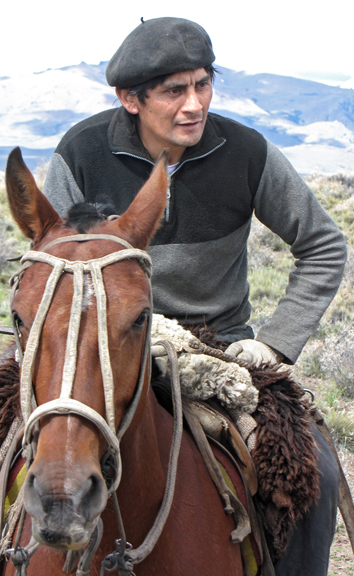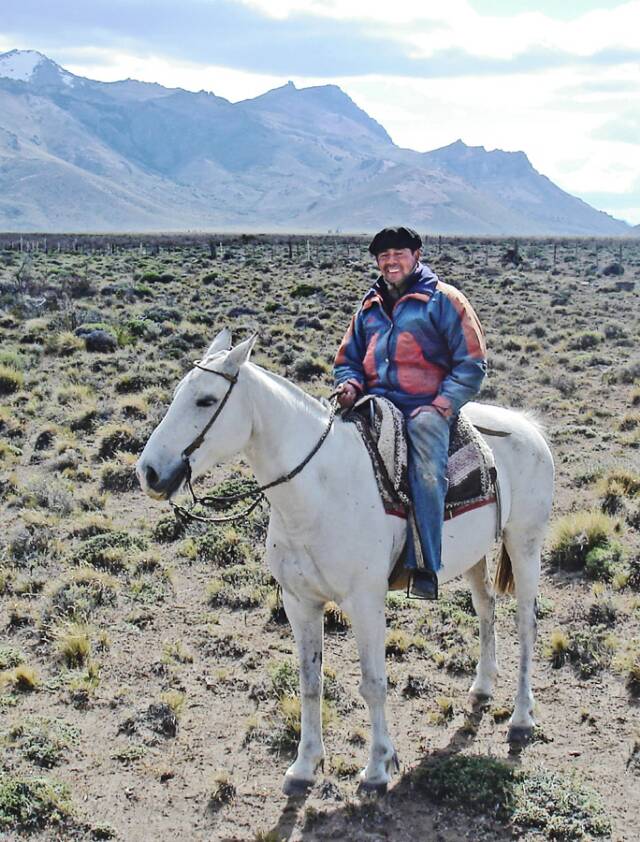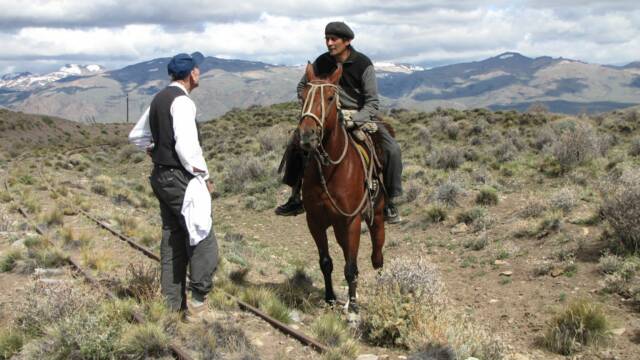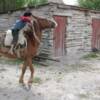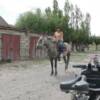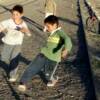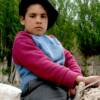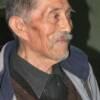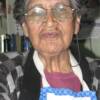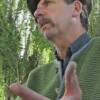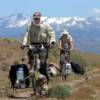We were not entirely alone, however, in that vast empty landscape. Each day we encountered at least one gaucho on horseback roaming the countryside to tend to his herd. The gaucho in Patagonia is more correctly called a puesteros. They live in small cabins called a puesto, which means roughly, "belongs to the ranch". They usually work large sections of land on a ranch which might have as many as 20 puesteros and encompass huge tracts of land.
Most puesteros are single and live alone with their herding dogs. Once a month they go to the main office of the ranch called a casaco. Here, the foreman gives out monthly provisions. These supplies include flour, mate (tea), cooking oil and tobacco. Puesteros eat almost entirely lamb which they butcher
every few days. They have anywhere from 3 to 6 dogs, the most popular being border collies. They usually sleep in their puesto but sometimes camp under the stars. The puesteros ride large horses often of Mongolian descent. These horses are very strong and can go great distances without water.
Peter in Patagonia
Part IV: Synopses Continued
Most of the route of the Old Patagonia Express runs through wild, unoccupied country. To call it a wilderness may be incorrect, but that designation is fairly appropriate. We would travel for hours through endlless vistas without any sign of habitation. It is a harsh landscape, much
like the high desert of the Ameican west.
Our encounters with the puesteros were always friendly. They were curious and interested in our railbiking, and would ride their horses to the tracks or into our camps to greet us. Sadly, they spoke no English, and our command of Castilian Spanish was next to non-existent. There was lots of sign language, head nodding and many smiles. Sometimes while riding through the seemingly endless vistas they would greet us from afar with a high call of “Hieeeee”. These men all had an aura of great self-confidence and dignity.
In those abandoned railroad communities where there were still a few people living, the children fast became our friends. They flocked to the tracks to examine our railbikes and begged us to allow them to ride them. Dick in particular was great with the kids, and spent hours working with them. He had brought small toys as gifts which he gave out generously to eager hands. The kids did
not find the language barrier a deterrent and relished the interaction with the foreign strangers, who were among the very few outsiders they had encountered.
In El Maiten we had to transport our bikes and all our luggage about four blocks from the tracks to our lodging. The local kids were eager to help. It took as many as four small boys to carry one of our heavy suitcases, laid flat with a boy at each corner. They earned fifty centavos each for the services (about 12 cents American).
The day after our layover in El Maiten we arrived at Norquinco in the late afternoon and spent the rest of the day and well into the evening getting to know the kids. The old railroad community where they live is located about 2 miles from the village and most of the kids had their own horses, which they rode with great skill.
We took lots of video of the kids and they loved to see replays of themselves. They would huddle around us and watch with rapt attention, often breaking out in laughter at their own antics.
That evening Dick brought out a battery-lighted frisbee and we had them running wildly about, thrilled with a new activity they hadn't experienced before.
Later, they invited us into their surprisingly modern school, where they showed us videos of their local activities. They let us store our bikes and equipment there which allowed us to take advantage of Morgan and the rented vehicle to go back to El Martin for the night, and real beds.
It was in also in Norquinco that we acquired our team mascot - a dried carcass of a large armadillo. One of the village elders presented the armadillo to Dick in a gesture of friendship. The armadillo rode on the back of Dick’s bike for the remainder of our trip, only to be left behind in Buenos Aires when it was determined it could not return with us to the States. Ah, parting is such sweet sorrow.
Friends on the Trail
Click on the images above for enlarged view and explanations.
Dick Smart
Dick Smart
Dick Smart
Dick Smart
